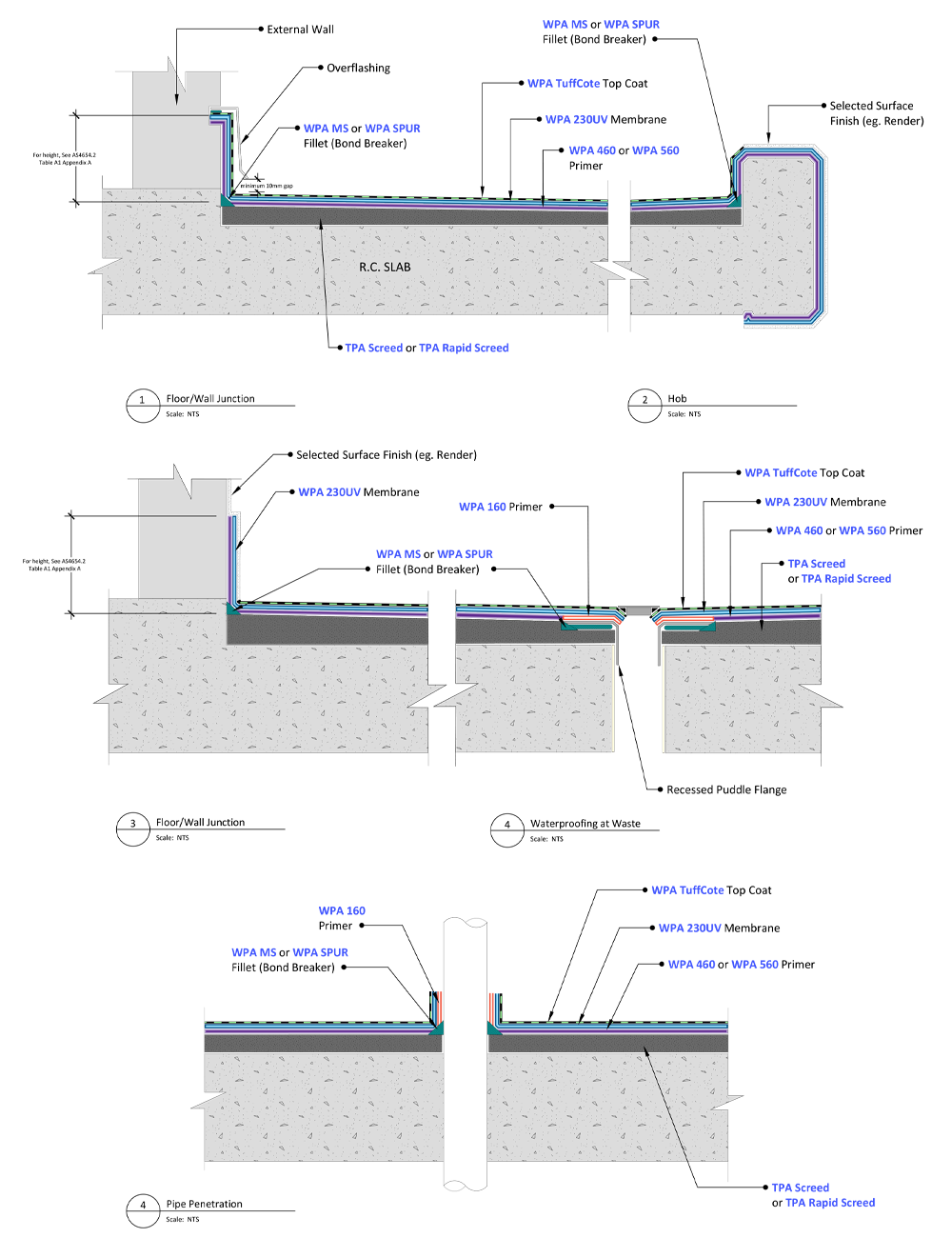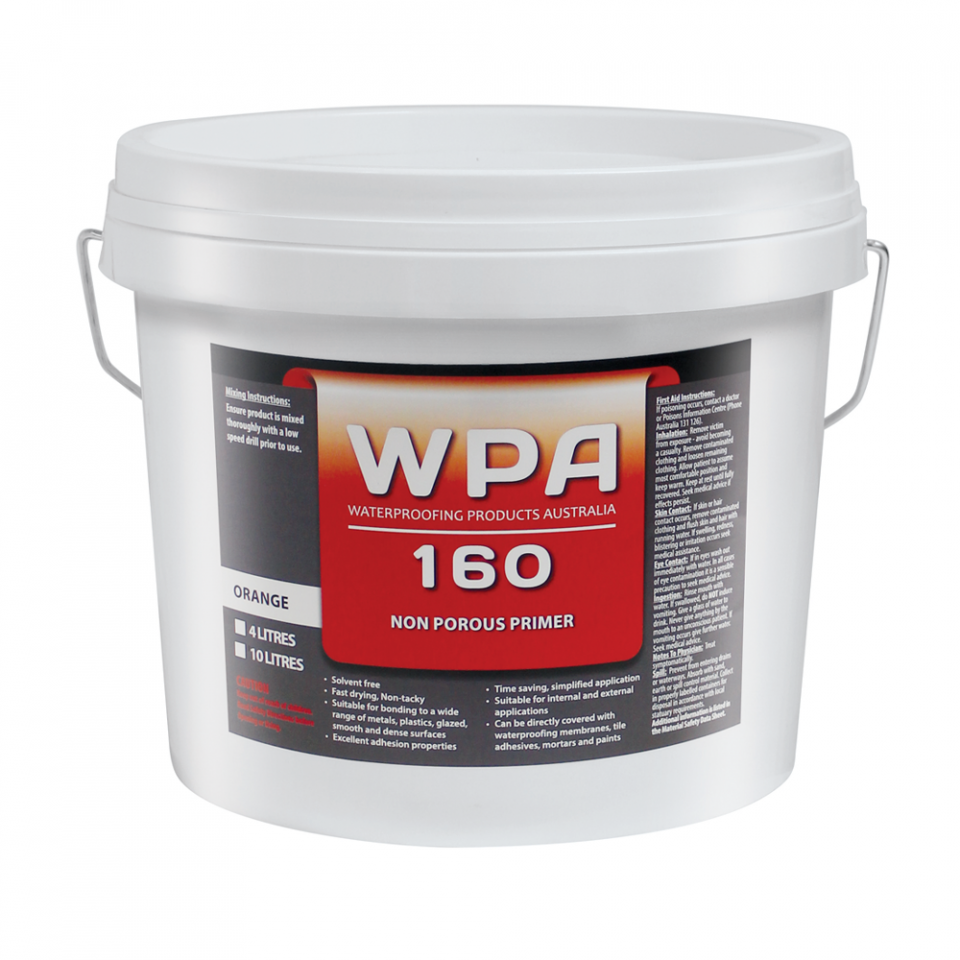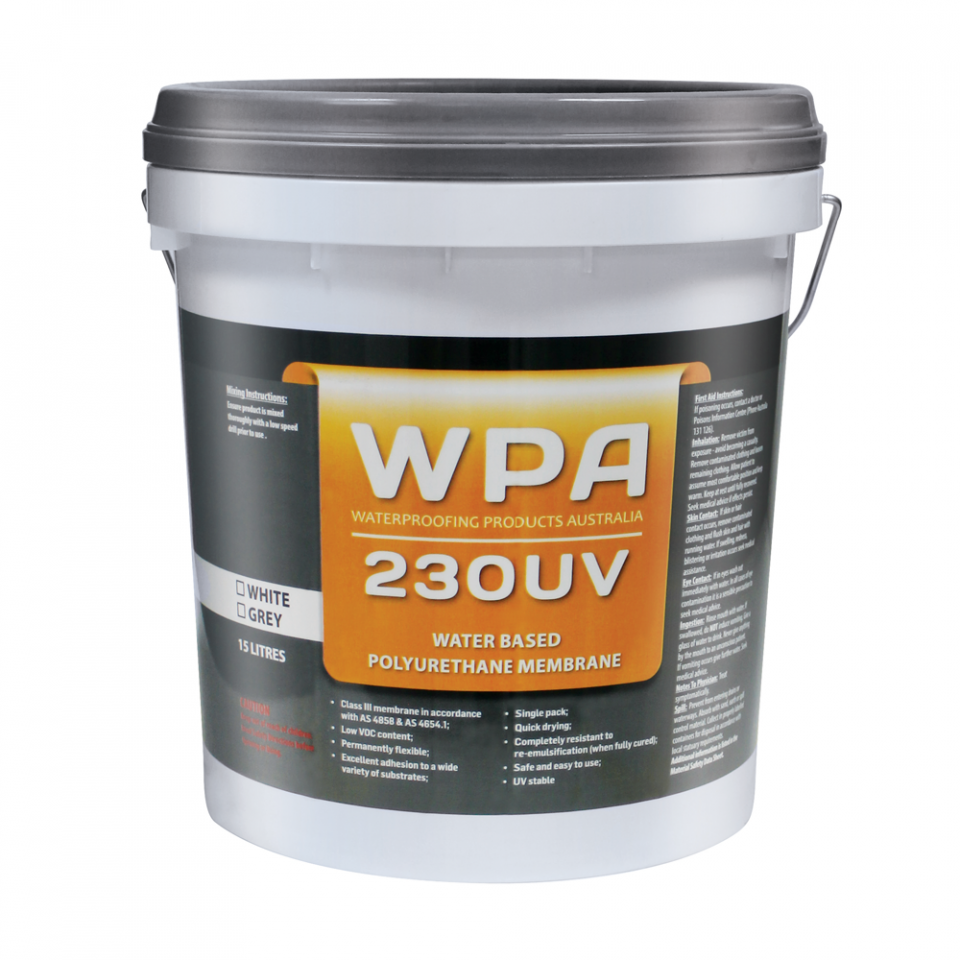Systems
Roofs
Home Bayset Systems Roof Systems Trafficable Exposed Concrete Waterproofing Concrete Roof – Trafficable – 410
WP410 Waterproofing Concrete Roof – Trafficable
Preparation:
- All surfaces to be waterproofed must be firm, clean, dry, sound and smooth. All grease, oil, wax, curing compounds, loose material, paint and any other contaminants must be removed, masonry surfaces must be pointed flush and surface defects repaired. New concrete must be cured for a minimum of 28 days.
- External corners to be waterproofed must be bevelled to ensure a smooth transition of membrane from vertical to horizontal surfaces.
Installation:
- Waterproofing installation shall be in accordance with AS 4654.2 Waterproofing Membranes for External Above-Ground Use.
- Install TPA Screed to achieve appropriate falls to waste. Where a bonded screed is required, apply a bond coat using TPA 401M or TPA Lite. Install TPA Rapid Screed for an engineered or rapid set screed, using a bond coat of TPA Rapid for bonded screeds.TPA Screed is a pre-blended screed mixture for the installation of cementitious screeds and tile beds, suitable for internal and external floor applications.TPA Rapid Screed is a pre-blended, rapid set, engineered screed mixture for the installation of cementitious screeds and tile beds, suitable for internal and external floor applications.
- Install an appropriate fillet (bond breaker) to all transitions using WPA MS or WPA SPUR.
WPA MS is a single-component, moisture-cured silane-modified hybrid sealant.
WPA SPUR is a high-quality, professional, universal, low-modulus sealant based on hybrid technology.
- Install a puddle flange to all waste pipes ensuring that puddle flanges are recessed into the substrate.
- Prime PVC and all other non-porous substrates using WPA 160 primer.
WPA 160 is a specialised solvent-free primer designed for enhancing the adhesion of subsequent membranes, adhesives, toppings and decorative finishes over non-porous substrates.
- Apply WPA 460 or WPA 560 primer to the substrate being waterproofed.
WPA 460 is a two-part, water-based epoxy primer, used to seal concrete and masonry surfaces.
WPA 560 is a two-part, water-based epoxy primer, designed as a water and vapour-proof coating under waterproofing membranes.
- Apply WPA 230UV membrane in a minimum of two coats to achieve the required dry film thickness. Ensure that the previous coat has completely dried before applying the subsequent coat(s). NOTE: All penetrations must be waterproofed.
WPA 230UV is an elastomeric, fibre-reinforced, water-based polyurethane membrane system designed for exposed or under-tile applications.
- Apply WPA TuffCote top coat to achieve the required dry film thickness. Ensure that the previous coat has completely dried before applying the subsequent coat(s).
WPA TuffCote is a hard-wearing, waterproofing membrane and slip-resistant topcoat for external floor surfaces. In addition to being a standalone waterproofing membrane, it can also be used to increase the slip and wear resistance of the WPA 230UV and WPA 200 waterproofing systems in applications subject to residential foot traffic, varying climactic conditions and permanent UV light exposure.
- Completely encapsulate parapet walls with primer and membrane. OPTIONAL: Cover membrane on parapet walls with metal capping, ensuring that capping is fixed on vertical surfaces only.
- Install over-flashing to cover membrane termination along walls. Leave a minimum 10mm gap from the finished floor level.
Products Used
- TPA 401M
- TPA Lite
- TPA Rapid Screed
- TPA Screed
- WPA MS
- WPA SPUR
- WPA 160
- WPA 460
- WPA 560
- WPA 230UV
- WPA TuffCote










